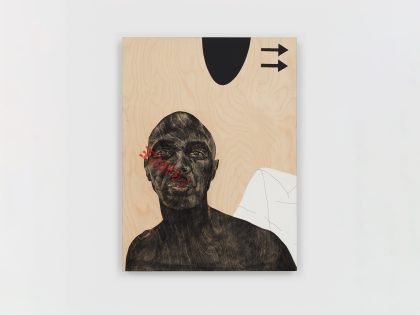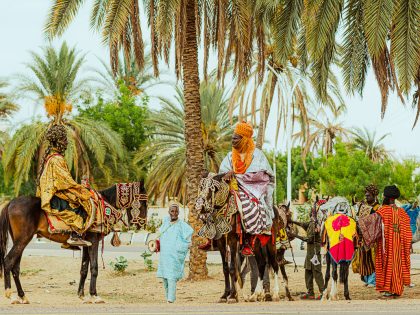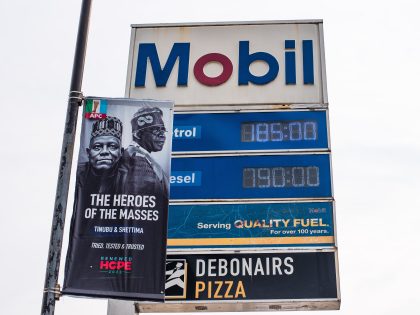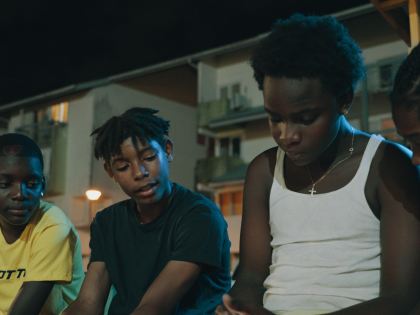Germany has its own “Sinterklaas Scandal”
Why is it so difficult to understand when we Africans say that it’s offensive?

The Dutch blackface figure, Zwarte Piet, revived every Christmas. Image by Gerard Stolk via Flickr.
The Oktoberfest in Munich may be over, but a curious debate sparked by the annual Bavarian bierfest is lingering like a bad hangover. Is it racist to put up targets portraying black people for fairgoers to shoot at? Yes, in Germany this is treated as a question to be answered with yes or no. This curious “debate” was kicked off by an article in the Munich-based national newspaper, the Süddeutsche Zeitung, on an attraction at this year’s “Wiesn” where visitors could shoot at iron figures portraying a black soldier and a black man in “civilized” clothing with air guns firing lead pellets.
Maximilian Fritz, who runs the stand, clearly knew that something was wrong with his attraction. He expected Wiesn organizers to question him about it, and was surprised when they didn’t. His justification for setting up shop anyway? “It’s about tradition, that’s how it was done in the past!” Oh, and of course he adds another line from the playbook: “I’m definitely not a racist.” Why? Because he removed the iron figure of a man resembling a Jew. In his mind, accusations of racism were “boring and narrow-minded.”
The stand was part of the “Oide Wiesn,” the “old Oktoberfest,” a section of the Wiesn that puts on display artefacts of Oktoberfest’s past. But make no mistake, it’s not a museum. It celebrates the history and tradition of the Oktoberfest, but there is no critical commentary on what is exhibited there. After the Munich newspaper contacted the Wiesn organizers, they did attach a plaque to the stand explaining that shooting at black people was not about racism; it just had to be understood “in the context of the colonial history of the time.” Clearly, the organizers have a high tolerance for contradiction.
The newspaper article triggered what Germans like to refer to as a “shitstorm” on social media. A look into the streams and comment sections is instructive about the level of public debate in Germany. The Süddeutsche Zeitung’s question, “Is this racism or tradition?” prompted many people to comment that it’s both, a “racist tradition.” But many other comments reveal that people think like Mr Fritz, the stand owner. “We have more important problems to discuss” was a usual response—fighting ISIS, for example. Some people even suggested exchanging the black figures with figures of Islamists.
Comments conveyed all the well-worn tropes of reactions to charges of racism. For many, it was a “typically German” debate. Germans overreact, they cause alarm for no reason, and they are too dramatic. Some complained that critics were too quick to “wield the Nazi cudgel,” a term recalling a debate around renowned author Martin Walser’s rightward shift in the 1990s. Many commenters were concerned that soon “it won’t even be allowed to shoot at animals and flowers, lest we upset animals rights activists.” Finally, the whole thing couldn’t be racist because some targets were white figures and players don’t actually shoot at the figures directly but at moving clay pipes attached to the figures.
The level of ignorance these comments convey is alarming. Commentators did not recognize that the other figures probably portray outcasts and other marginalized people of the time. And many people cited in their comments their happy childhood memories of singing the song “10 kleine Negerlein” (10 little N***), playing with their N***-puppet, and eating N***-kisses, a type of chocolate-glazed sweets. In those times, “no one thought this was racist,” and that’s why apparently it should be OK today. Some thought placing things in historical perspective made things worse. If the explanatory plaque hadn’t been attached, their reasoning goes, nobody would have made a connection with race discrimination.
The most disturbing comments were those characterizing people who raised concerns about racism as “fascists of political correctness,” “sharia public order officers,” leftist idiots who always complain, smartasses, and “Gutmenschen” (do-gooders)—a term linked to right-wing populism that was declared the second-worst term of 2011 (“Unwort des Jahres 2011″). Many commentators felt that those who raised concerns were people who felt the need to distinguish themselves.
At a time when Germans are concerned once more with the “refugee problem” and fears of a rising tide of anti-Semitism, this debate is troubling. As in many other contexts we wrote about, tradition is used as an excuse for racism. People don’t see a problem with the usual justification that it’s not meant to be racism. Hamado Dipama, member of the Panafricanism working group and of Munich’s Council for Foreign Residents, rightly wonders “Why is it so difficult to understand when we Africans say that it’s offensive?”



















